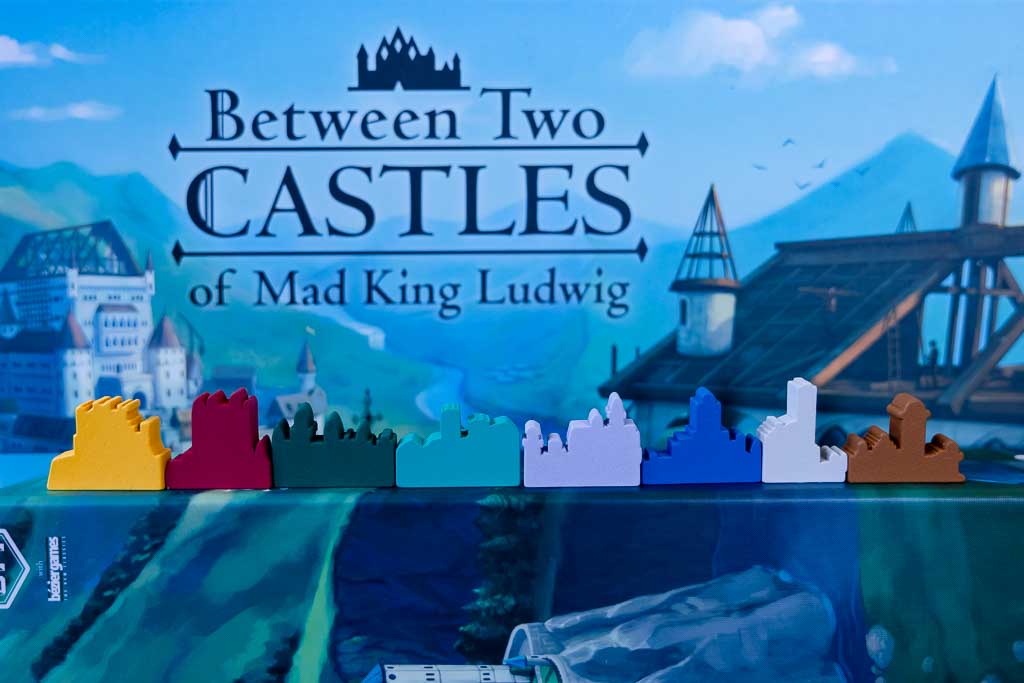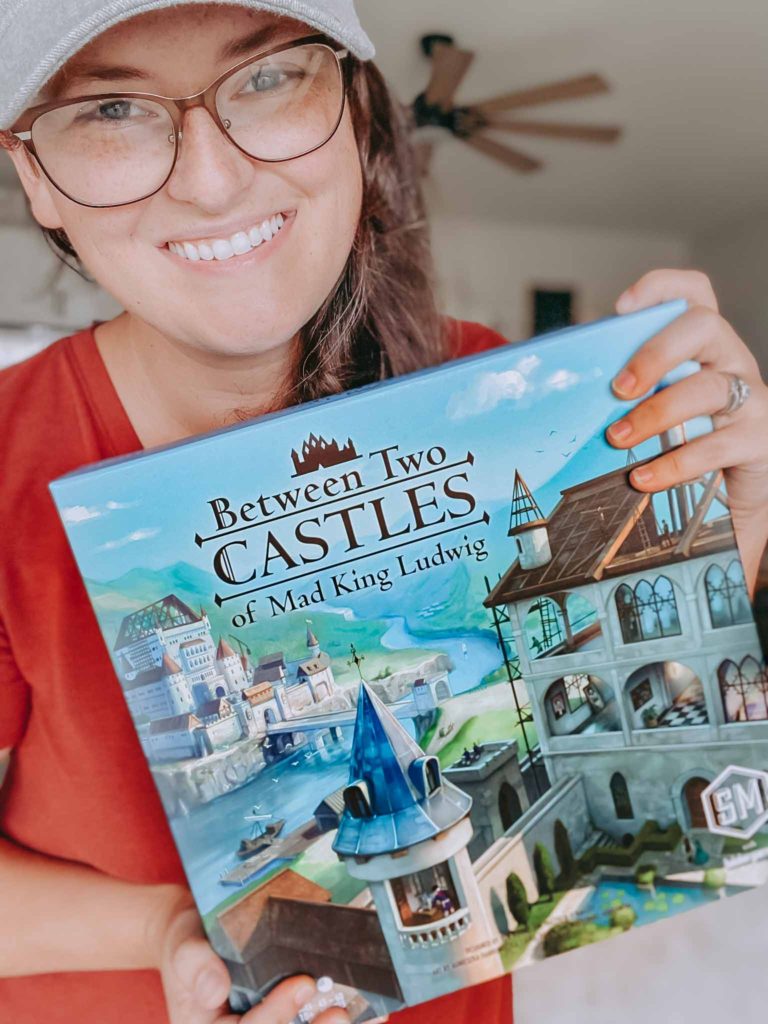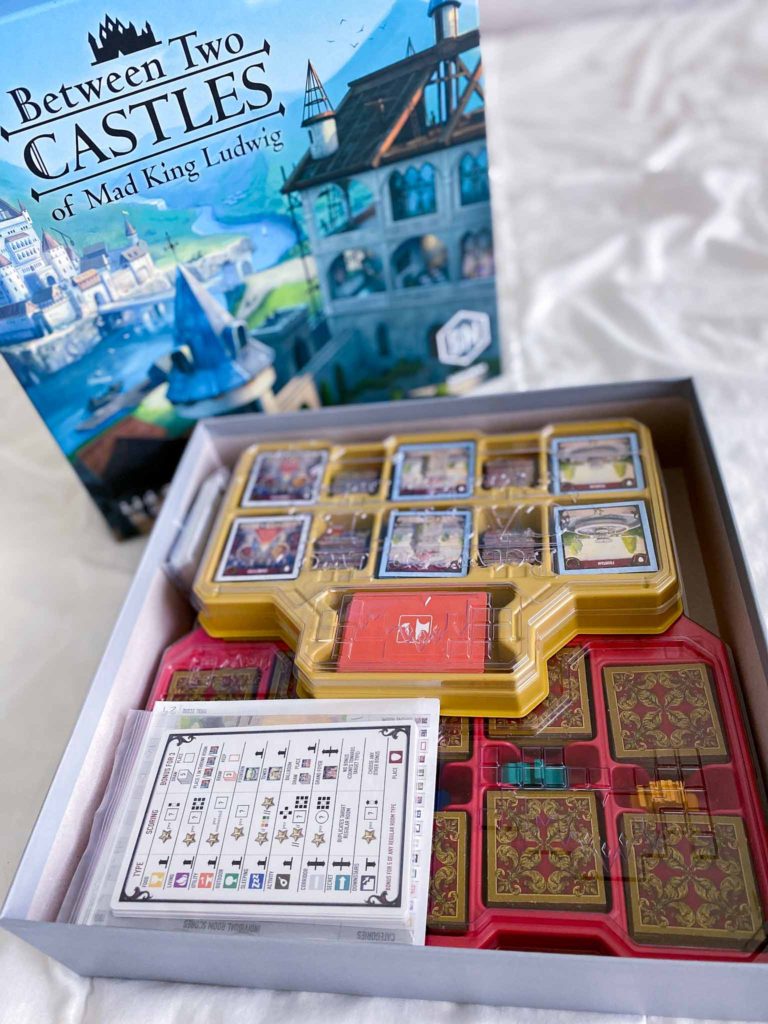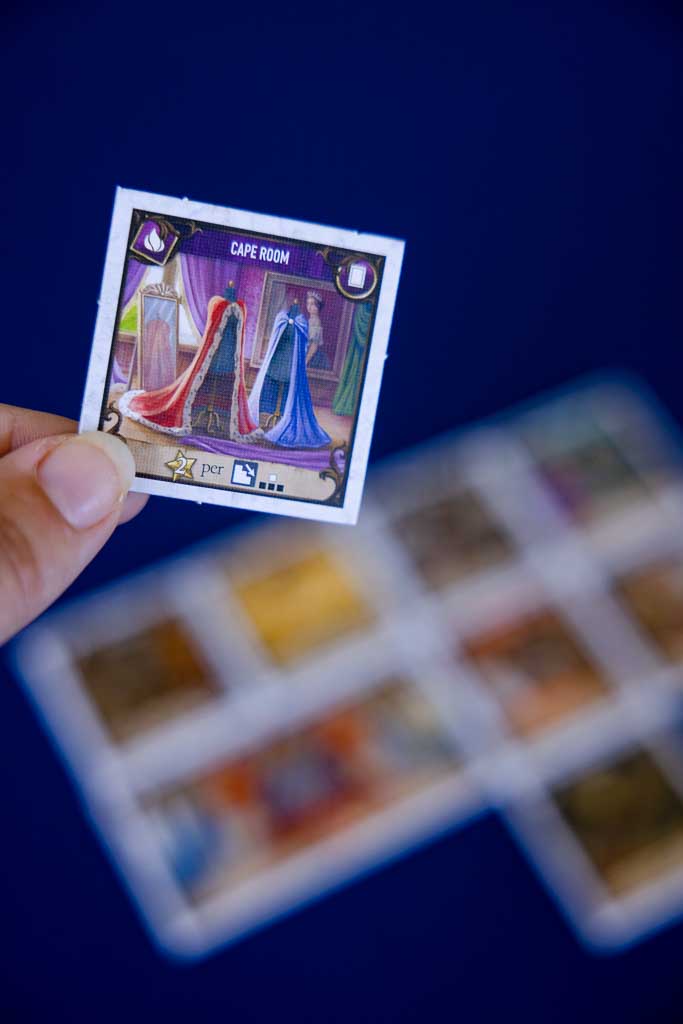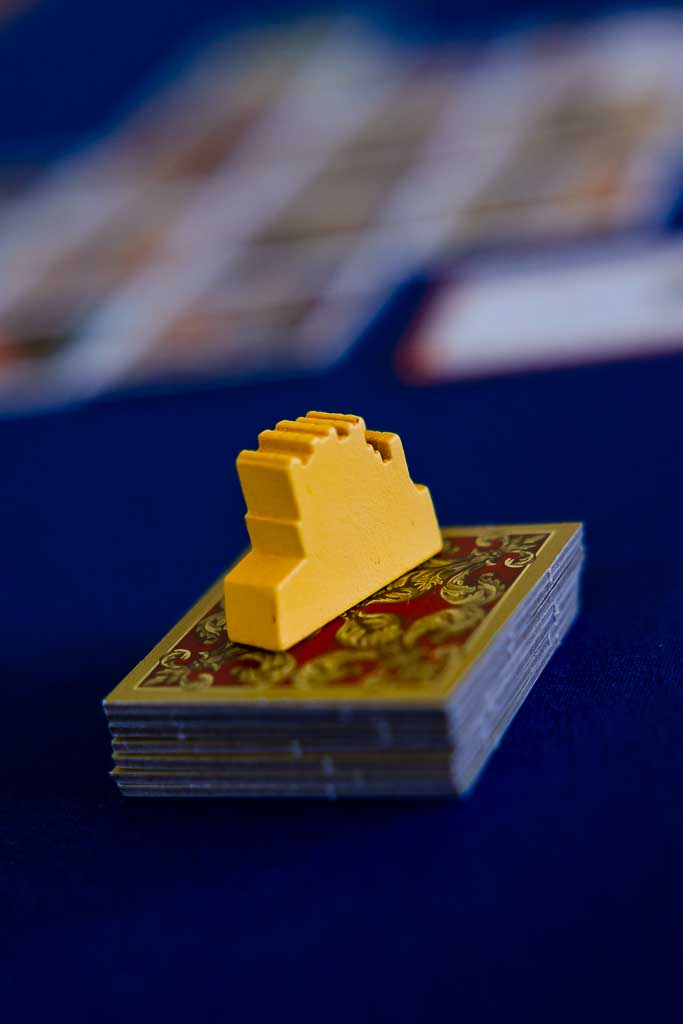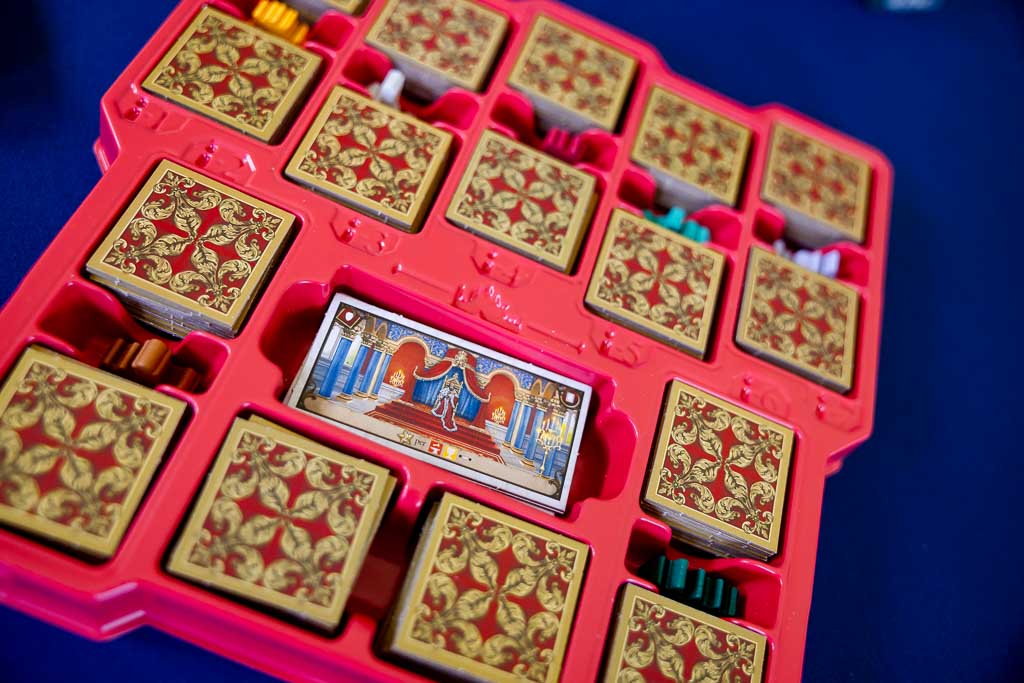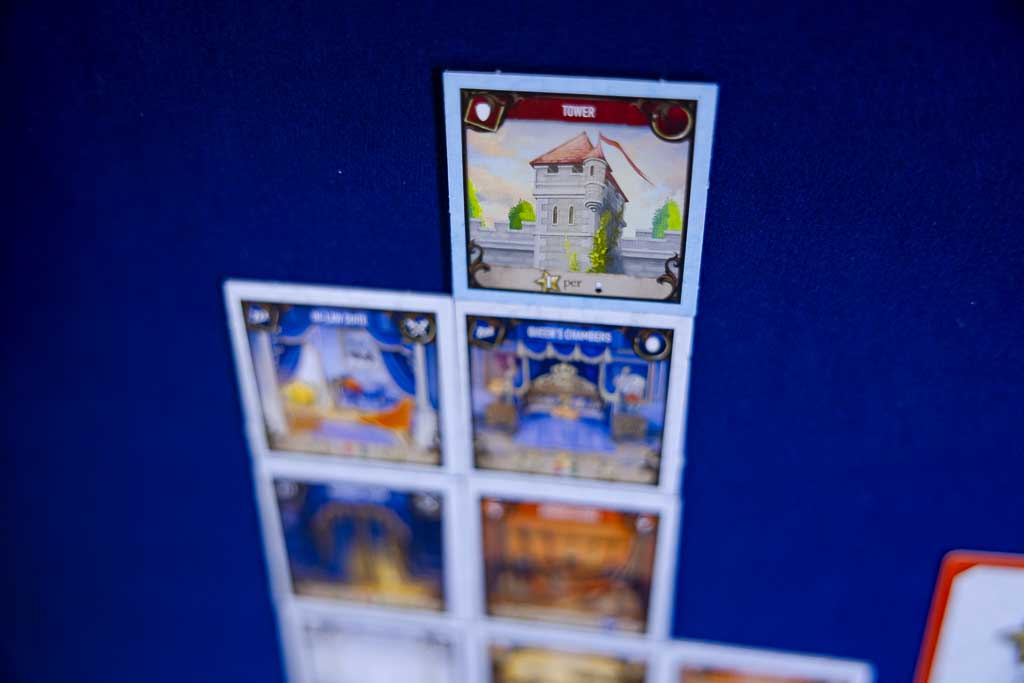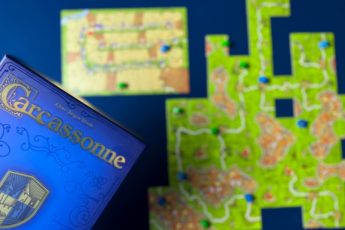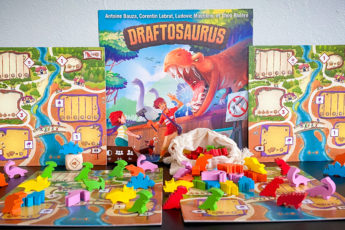Between Two Castles of Mad King Ludwig combines two of my favorite games into one. But does it work? Is it too much of a good thing?
I’m giving you all my thoughts on this 3-7 player game from Stonemaier Games.
What is Between Two Castles of Mad King Ludwig?
Apart from having the largest title of just about any board game, Between Two Castles of Mad King Ludwig (B2C) is a game based upon two different games. Between Two Cities from Stonemaier Games, and The Castles of Mad King Ludwig from Bezier Games.
Both games are tile placement games, yet each has their own unique style. B2C takes the theme of The Castles of Mad King Ludwig, where you are trying to build magnificent, high scoring castles for the Mad King, and puts it onto the mechanics of Between Two Cities: a competitive tile drafting game where you work together with the players on either side of you to build a city but only one player wins.
How do you play?
In B2C, you are a master castle builder who must help design castles for the Mad King. But you can’t do it alone. You work with the players on either side of you. Between yourselves, you’ll plan and build a castle together. Each player will build two unique castles while sitting between them.
Each player begins the game with a 9 tiles. On your turn you’ll select two tiles to play, one for the castle on your left and the other castle on your right. Tiles are revealed at the same time. Players work together to place them and then pass their stack of tiles to the player clockwise and repeat the selection process until the tiles are gone. This cycle is repeated again while passing tiles in the opposite direction.
Each tile represents a unique room you can choose to put in your castle. Each room scores in a different way. As you place rooms in your castle, you’ll create opportunities for other rooms to pair well and score you points. For example: A downstairs room scores 1 point per the number of a specific type of room you have. Drafting and placing those rooms into your castle not only gives you the chance to score the drafted room, but also allows the rooms that earn points off of that room to score as well.
You can earn bonus actions by placing three and five tiles of a single room type in a castle. This allows for players to maximize their scoring potential by strategically selecting tiles that will give them bonus actions.
Once two rounds of tile drafting have completed, players will each have two fully built castles. The total of each castle is scored. The winner is the player who’s lowest scoring castle is the highest.
What do we think?
Between Two Castles of Mad King Ludwig is truly one of my very favorite games.
Every game is thoughtful, interesting, challenging, and — most importantly — fun!
Something I find very important in a game is whether or not it is designed in such a way so that it is fun even when you lose. One of the best ways to do this is to allow players the satisfaction of having built something. Yes, perhaps that thing doesn’t earn you enough points, but it’s something you worked on and can be proud of.
B2C does this so well!
Every single tile is unique in this game, which means that every tile you place into your castle has its own name, its own artwork, its own personality. Together with your friend (I’m assuming you aren’t playing with an enemy) you build a castle that often shaped in zany ways and filled with all manner of interesting things. You even get the chance to name it during the scoring round. All of this contributes to the fun of the game and makes the over all result less important. Sure, you still want to win, but if you don’t, who cares? You build “Sleepy Time Castle” where there are 8 different sleeping rooms to please the King!
Thoughtfully Strategic
While you may not mind losing, B2C will still have you agonizing over each tile trying to find your path to victory.
The game itself is straightforward, yet there are so many different combinations you try with the tiles, you’ll really need to put some thought into which you’d like to draft and how you can best utilize them throughout the game. Some tiles might be best to place early, while others are perfect for that final game push.
I love that while you can play this with a large group, it doesn’t necessarily feel like a party game. It’s not a wild experience where the points don’t really matter. It’s still a very strategic game that requires your full attention throughout.
The cooperative/competitive nature of the game also allows for interesting strategies to develop. There’s a cool balance that you much strike between building a high scoring castle by drafting all the best tiles and not helping your opponent whom you’re working with a path to victory. As much as you are working together, you’re still trying to be the individual winner.
Components
One of the shining qualities of B2C are the amazing components. Everything is high quality and made to last. You’ll never tire of looking at all of the unique and interesting art. (So many easter eggs too for all you Stonemaier Fans!)
My favorite component though might be surprising: the Game Trayz.
Everything required to play, all of the many many tiles, wooden castles, and other bits all fit perfectly into the plastic inserts with LIDS! No need to worry about storying the game vertically!
I say this nearly every time we play the game, but I honestly feel like if this game didn’t come standard with the Game Trayz inserts I wouldn’t play it often. The tiles would be insanely fiddly and the fact that I don’t have to store them in 100 plastic bags but instead can open up the lid, grab a starting hand of tiles and immediately get playing is the gold standard.
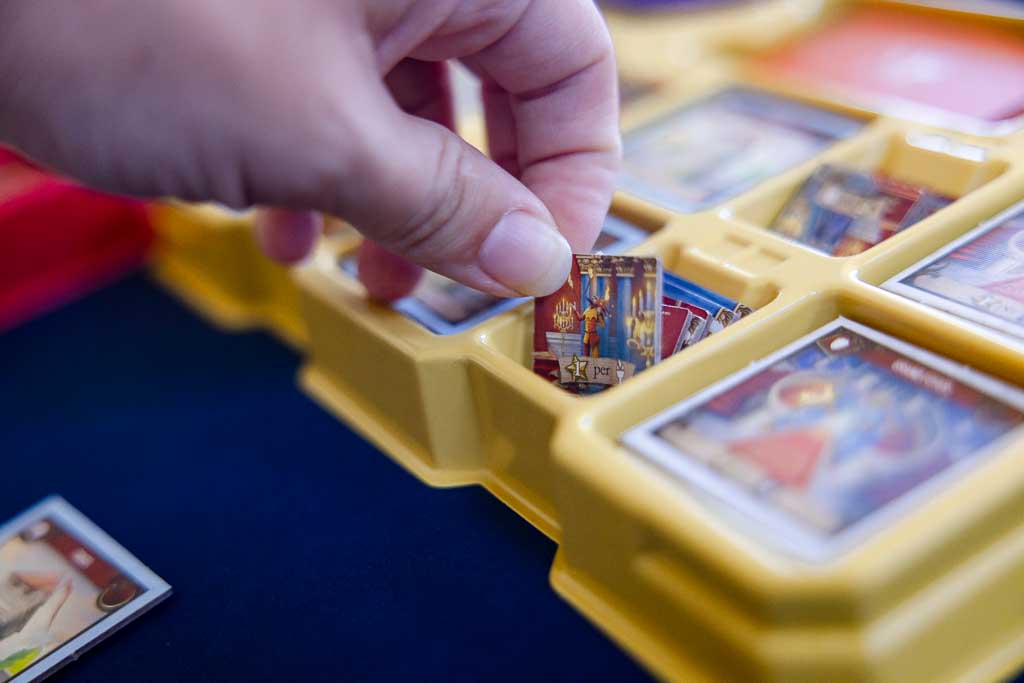
How does it play with two?
While the game itself says its for 3-7 players, there is a two player variant. Essentially the game feels nearly the same when playing this variant.
In short: I love this game at two player. It plays so fast — we almost always play two or three rounds when we sit down together. The only downside to a two player game is that you won’t see as many tiles as you normally would in a higher player count game. However, I do not feel like that has impacted my two player games negatively.
Can kids play?
Between Two Castles is best suited for the older child.
The biggest hurdle younger kids will have is all of the mental math that they’ll need to do when placing each tile.
This is one of my top recommends for educational games just because there is so much math involved. You’re constantly recalculating a tile’s potential value based on where you place it.
I will say the game can get quite tricky when trying to both calculate the math of a tile while also weighing the odds of tile drafting, where to place the tiles you do draft, and the general difficulty of managing two complex castles at once.
Summary
If you are a fan of tile placement games or enjoy the simple pleasures derived from building your own city, you will for sure love Between Two Castles of Mad King Ludwig.
This is a top tier game for me. Both games it pulls its inspiration from have delighted me for years, and now this game has, in many ways, replaced them both as my favorite of the three.
I can’t recommend it highly enough.
To purchase your own copy of Between Two Castles, click here.
Find it and all our favorite games on our Amazon Storefront.
Read our thoughts on the expansion, Secrets and Soirees here.
Game Info:
Title: Between Two Castles of Mad King Ludwig
2-7 Players Ages 10+
Designer: Ben Rosset & Matthew O’Malley
Artist: Agnieszka Dabrowiecka, Laura Bevon, Barlomiej Kordowski
Publisher: Stonemaier Games


